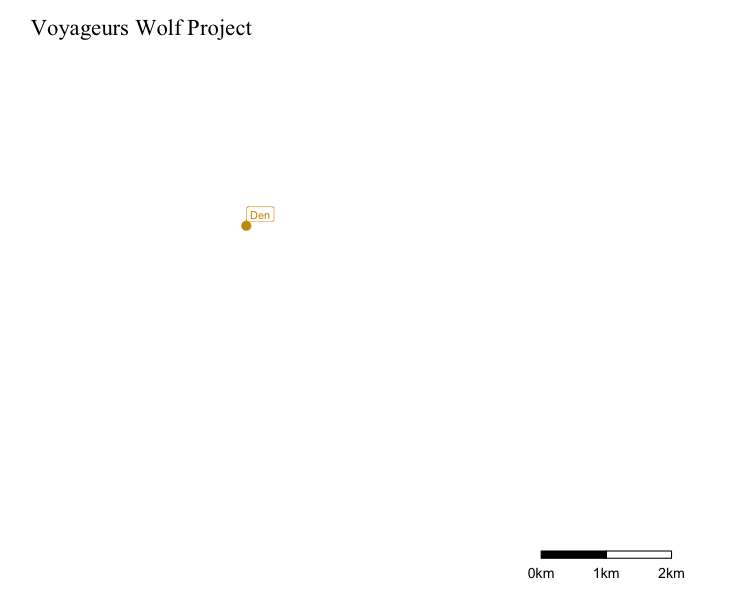ANIMATIONS

We collect >1000–2500 scats each year from 4–6 wolf packs to get really detailed diet information. This allows us to see how wolf diets change over the summer and between years. Above are our diet results from 2015. You can see wolf diets change a lot over the summer as different foods become available.
In 2018, we had two wolves from the Greater Voyageurs Ecosystem that dispersed a month apart from one another and traveled >300 km (186 mi) north (as the crow flies) to the Red Lake, Ontario area. These two wolves then met up 4-5 months after they dispersed. What are the odds that these wolves would find each other >300 km due north of where they dispersed from!? We published a paper on this observation (Gable et al. 2019. Is there a mechanism that causes wolves from same area to disperse long-distances in same direction? Canadian Wildlife Biology and Management 8:62-65). You can get a free PDF of this article on our publications page.
See how 6 wolves from different adjacent packs move around their territories at the same time based on GPS-collar locations! In November 2018, we shared a map that showed these same movements/locations, but it was only a still image. So we decided to bring that map to life so you can see the daily movements of these wolves from April 15, 2018 (when our first collars were deployed) to the end of October. This amazing perspective of wolf territoriality results from having GPS-collars that take locations every 20 minutes (72 locations/day), which provides detailed travel paths from each wolf.

Even with GPS technology it is hard to determine what wolves do during summer because of the incredible amount of time necessary to visit everywhere the wolves go. Even with a 6–8 person crew in the summer, we can only follow about 6–8 wolves each summer (and even that stretches our abilities). But all that hard work results in the amazing information in the graphic above. In the graphic (which only represents 5 days from one of our collared wolves in 2018), each big colorful circle is where the wolf spent >20 minutes (commonly referred to as 'GPS clusters'), which we later went and searched on foot to see what the wolf was doing (except for the den which we did not visit). In 2018 we searched 4,700 of these clusters where wolves spent >20 minutes! By following wolves this intensively from April until October, we get unparalleled insight into the secret lives of wolves during the summer, and are learning things about wolves that have remained unknown until now.
Lone wolves can wander for a long time in search of a place to call home. Here are the travels of Wolf V068, a lone wolf who we started following last May. Lone wolves can often make up to 10–20% of a wolf population meaning that V068 is certainly not alone in his wandering! From then until late March, V068 had traveled 2,774 miles but had yet to settle down. However, in May 2019 we confirmed that V068 had finally settled down and joined a pack south of Littlefork, MN. We documented a litter of 4 pups in early May 2019 from this pack and suspect that these are likely V068's offspring.

Wolf diet during the summer is highly variable and constantly changing. See it for yourself! This animation shows the diet of a single pack at weekly time intervals from June 24–October 10 (15 weeks) in 2015. This was the first time pack diet has been studied at weekly time intervals during the summer, showing how quickly wolves can respond to new foods. Once berries became available, there was a huge change in the diets of the pack. Similarly, we see black bear showing up in the diet in September for a few weeks. This change corresponds with the black bear hunting season in Minnesota. During bear season, wolves start scavenging gut piles of hunter-killed bears because it is an easy, free meal (this is a behavior we have seen consistently since 2015).
